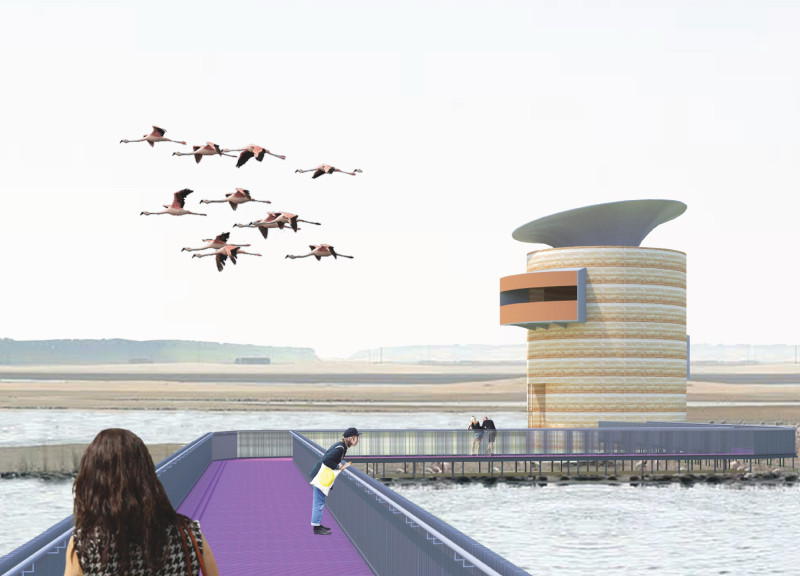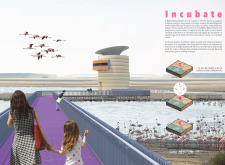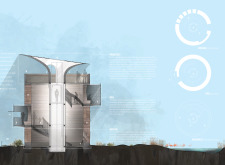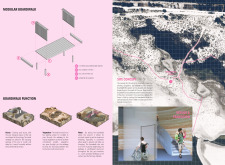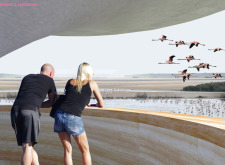5 key facts about this project
The observation tower within the Al Wathba Wetland Reserve enhances visitor interaction with the local ecosystem while respecting its delicate nature. Located in a key habitat for species such as the Black Winged Stilt and the Greater Flamingo, the design integrates seamlessly with the environment. By elevating visitors above the wetland, the structure allows for unobstructed wildlife views, deepening the understanding of this unique landscape.
Ground Level: Refuge
At the ground level, known as the Refuge, visitors step into an inviting space designed to ease the transition from the outside world to the tranquility of the reserve. Thick walls made from rammed earth provide insulation against the heat and contribute to a comfortable atmosphere. This choice of material connects the design to the local landscape, creating a sense of place that is both grounding and contextually relevant.
Mid Level: Veil
Moving up to the second level, called the Veil, visitors find a series of observation rooms that promote quiet viewing. The design recalls traditional mashrabiya screens, which offer privacy while allowing air to flow naturally. This arrangement allows people to observe wildlife without causing disturbance. By creating spaces that separate visitors from the birds below, the design encourages a respectful relationship between humans and nature.
Upper Level: Prospect
The top level, referred to as the Prospect, offers expansive views of the wetland. Here, a conical canopy provides shade and collects solar energy, addressing sustainability in a practical way. This feature does more than protect from the sun; it also draws visitors’ eyes to the landscape and highlights the intricate interactions within the ecosystem. The Prospect serves as a rewarding endpoint in the journey through the tower.
As one ascends through the levels, the experience shifts. The design balances functionality with a strong connection to the natural surroundings. Each area serves a purpose, guiding visitors toward a deeper appreciation of the rich biodiversity present in the Al Wathba Wetland Reserve.


